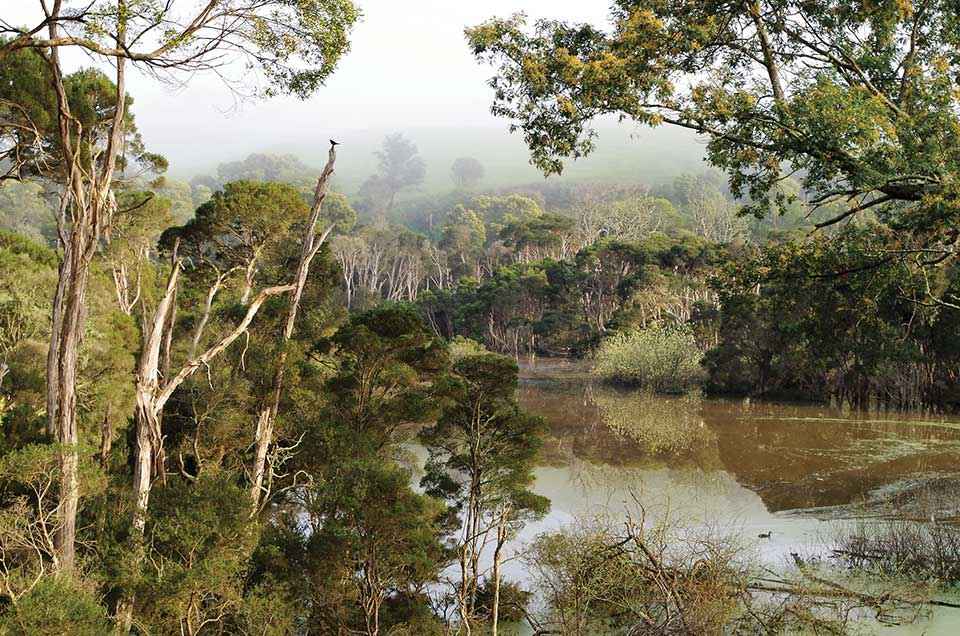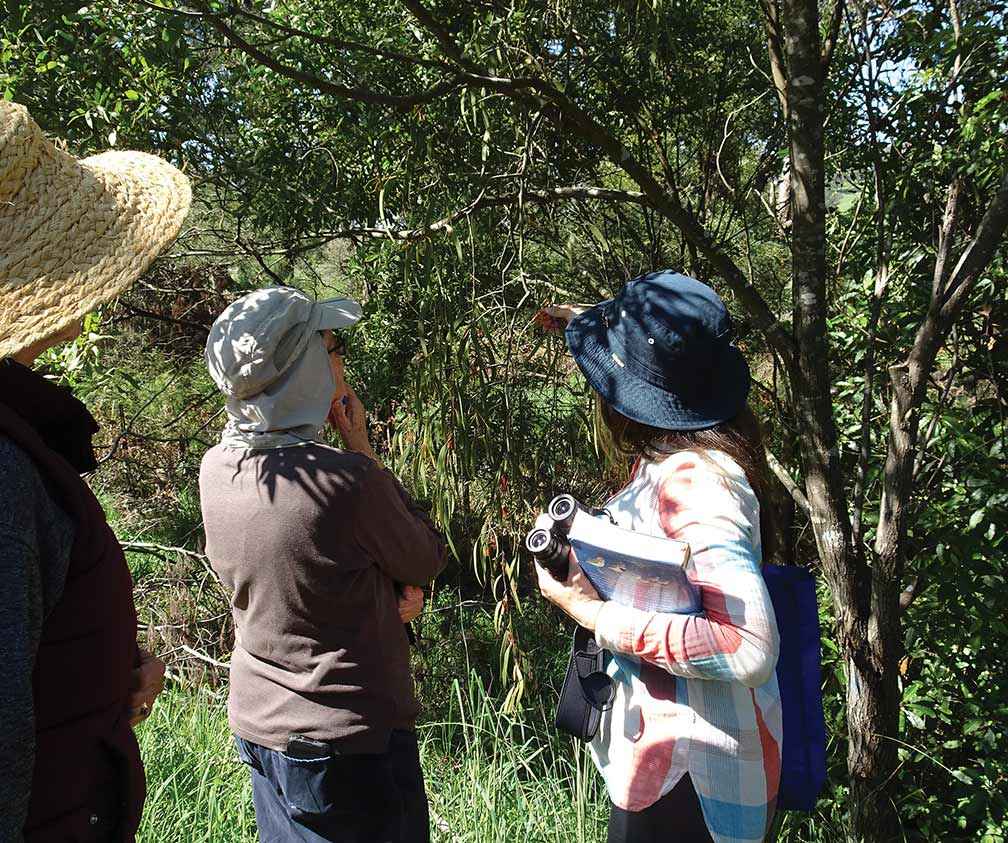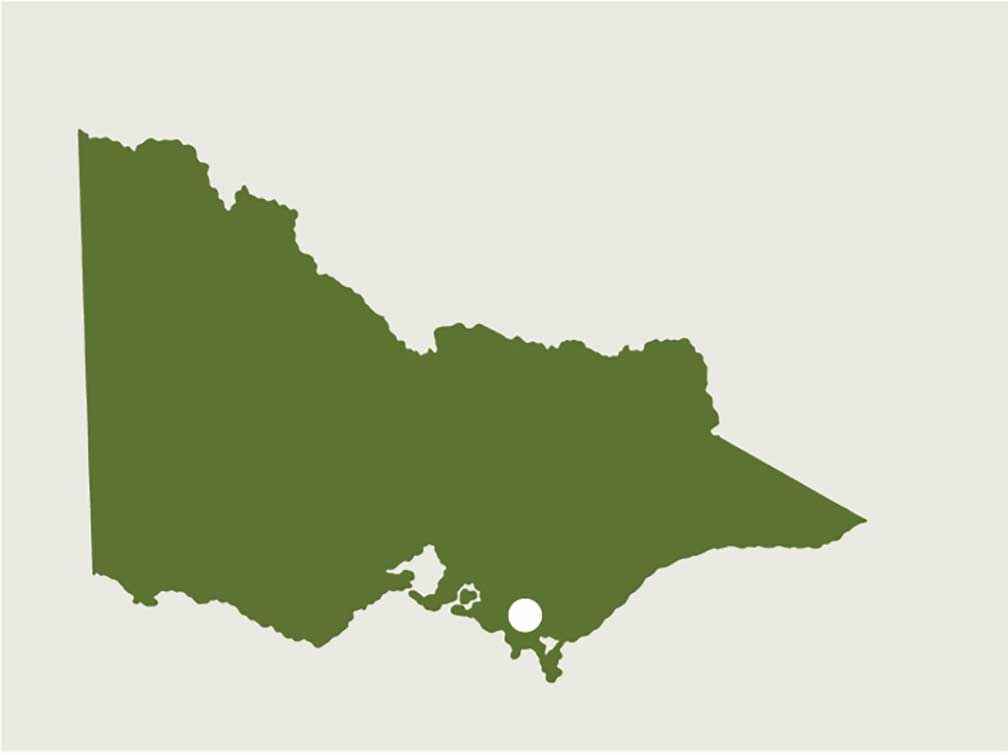Victorian Landcare Magazine - Summer 2019, Issue 74

Nerrena Tarwin Valley Landcare Group
The current executive of the Nerrena/Tarwin Landcare Group (NTVLG) in South Gippsland is all women. The group values diversity and there are many men caring for the land within the NTVLG area and also actively involved in the group. However, what Kate Walsh, Coral Hughes, Jill Vella and Sue Miles have achieved through open communication, cooperation and determination is well worth recognition.
The Black Spur Creek Wetlands project demonstrates some of the achievements of these women. The wetlands (40 hectares in size) encompass the confluence of the west branch of the Tarwin River and Black Spur Creek. The South Gippsland Highway and the Great Southern Rail Trail run through it.
Parts of the wetland weren’t heavily cleared for farming, so it’s a snapshot of what South Gippsland would have looked like when it was managed by Aboriginal people. The wetlands are rich with bird and aquatic life. The banks are fringed by swamp paperbarks and majestic blue gums and Strzelecki gums. There are interesting landforms and the nearby Koonwarra fossil beds contain fossils that are more than 100 million years old.
Parts of the wetland weren’t heavily cleared for farming, so it’s a snapshot of what South Gippsland would have looked like when it was managed by Aboriginal people.
The Black Spur Creek Wetlands project demonstrates some of the achievements of these women. The wetlands (40 hectares in size) encompass the confluence of the west branch of the Tarwin River and Black Spur Creek. The South Gippsland Highway and the Great Southern Rail Trail run through it.
Parts of the wetland weren’t heavily cleared for farming, so it’s a snapshot of what South Gippsland would have looked like when it was managed by Aboriginal people. The wetlands are rich with bird and aquatic life. The banks are fringed by swamp paperbarks and majestic blue gums and Strzelecki gums. There are interesting landforms and the nearby Koonwarra fossil beds contain fossils that are more than 100 million years old.
The challenge of uncertainty
The proposed re-alignment of the South Gippsland Highway was a concern for the group, as it would mean the loss of some irreplaceable older trees and important biodiversity. There was also a lot of uncertainty as to where the highway
would be built.
In the early 2000s the local community recognised the significance of the wetlands and organised meetings and working bees, but work was discontinued because of uncertainties, especially around the highway realignment.
In 2016 a new section of the Great Southern Rail Trail was constructed providing public access to the wetlands. The finalisation of the Major Road Projects Authority (MRPA) plans for the South Gippsland Highway around the same time provided an impetus to work on a Black Spur Creek Wetlands Plan once again.
In September 2016 the NTVLG, with assistance from the South Gippsland Shire Council, developed a 20-year plan to protect and restore the wetlands and associated Strzelecki gum woodlands. Developing the plan wasn’t without its challenges.
Managing many stakeholders
Jill Vella explains that a number of stakeholders were involved.
“The wetland covers a large area of public land managed by several stakeholders, including the West Gippsland CMA, DELWP, the Great Southern Rail Trail committee, South Gippsland Shire Council and private leaseholders. Throw the MRPA in to the mix and it’s clear that the goodwill of all players is a huge issue.”
Given that NTVLG neither owns nor manages the land, the usual methods of harnessing resources and getting on with the work were not applicable.
According to Coral Hughes, using open communication and a professional approach to gain the trust and respect of relevant land managers was critical.
“I was happy to contribute my enthusiasm, ability to cooperate and desire to do what needs to be done to make it happen,” said Coral.
Kate Walsh believes the project has brought many opportunities to the group.
“It has provided us with the opportunity to work with the MRPA who have access to research, (both cultural and scientific) and resources to implement works to protect, restore, enhance, manage, and extend the biodiversity that we have on site. It has been a pleasure to work with MRPA’s Debbie McLees,” Kate said.
Given that NTVLG neither owns nor manages the land, the usual methods of harnessing resources and getting on with the work were not applicable.
Advice for groups
Kate’s advice for groups looking to undertake similar projects is that every piece of land has significance and the potential to provide environmental services.
“Develop a shared vision and core values and, if possible, a plan at the outset. Try to turn your barriers into opportunities and work with a strong core team of committed individuals. It’s important to develop partnerships and involve the broader community. Respecting and trusting the diverse skills within the community is critical, as is maintaining on-ground contact with the natural environment you are committed to.
“Our project is ongoing. We are continuing to raise awareness and getting to know each other, the wetland, and our project partners. Our aim is for the NTVLG and the wetland project to have far greater longevity and momentum than any individual person or group,” Kate said.

Above: Members of the Nerrena/Tarwin Valley Landcare Group discussing mistletoe at a recent bird monitoring session.
Sue Miles believes the project has given the group a shared focus, attracted new members and built the capacity of the group.
“When we start bird monitoring, community members who have not previously been part of Landcare will hopefully join us. The Koonwarra Recreation Reserve recently became a member of the NTVLG and we have other individuals showing interest. People love being part of a successful organisation that is going somewhere,” Sue said.
The South Gippsland Highway re-alignment is scheduled to commence in mid-2019.
Kate McKenzie is the South Gippsland Landcare Network Coordinator. Her position is funded through the Victorian Landcare Facilitator Program.
For more information email Kate Walsh at walshpk@gmail.com

Above: